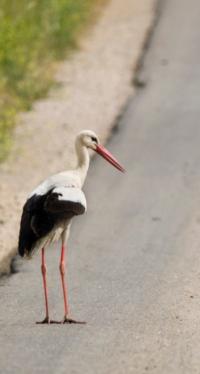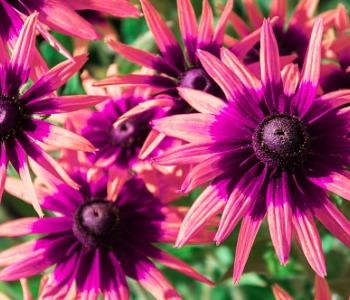New microbes discovered in termites, a stork and broccoli
Posted on September 15, 2020 by Laura Cox
Each month, the Microbiology Society publishes the International Journal of Systematic and Evolutionary Microbiology (IJSEM), which details newly discovered species of bacteria, fungi and protists. Here are some of the new species that have been discovered and the places they’ve been found.
A common sight on the walls, ceilings and floors of underground caves is a creamy, white liquid called moonmilk. The exact cause of moonmilk is unknown, with theories ranging from chemical reactions between water and the karst of caves, bacterial production and, in the 14th Century, moonmilk was believed to be caused by ‘moon rays.’ This unique substance was the source of two new species of bacteria this month. Pseudomonas karstica and Pseudomonas spelaei were isolated from calcite moonmilk deposits in caves in the Czech Republic. These new species were both fluorescent and thrive in cooler temperatures.

Researchers in France, Bulgaria and Sweden identified six new species of Yersinia this month. Yersinia artesinia, Y. proxima, Y. alsatica, Y. vastinensis, Y. thracica and Y. occitanica were all isolated from human stool, except Y. thracica, which was found in isolates collected from pigs and wild boar. Another new species of bacteria was discovered this month in the faeces of an oriental stork. The sample was collected from a stork in the Seoul Grand Park Zoo in Korea and was named Flaviflexus ciconiae.
A radiation-resistant bacterium was discovered this month by researchers in China. Deinococcus terrestris is resistant to gamma radiation and ultraviolet radiation and was found in forest soil. Micro-organisms that can tolerate high levels of ionising radiation are a good way to research DNA damage and repair and could even be used to modify space environments to protect astronauts.
In Japan, researchers found Rhizobium discoreae, a white bacterium that thrives in alkaline conditions. They found R. discoreae was isolated from two different species of yam; water yam and lesser yam. Elsewhere in Japan, Pseudomonas brassicae was found causing the bacterial disease head rot in broccoli crops. When the bacterium infects the broccoli, the head of the vegetable becomes dark green and water soaked, before softening and beginning to rot.

On the slopes of Yongmun mountain, in South Korea, sits Jungwon waterfall. It is here that researchers discovered Aquitalea aquatilis, a yellow-pigmented bacterium that was isolated from water collected from the waterfall. Elsewhere, in China, a team of researchers identified two novel species of yeast from flowers. Teunia rosae and Teunia rudbeckiae were isolated from China rose and black-eyed Susan flowers.
An international research team of researchers based at institutions in Germany, Denmark and South Africa discovered four new species of actinobacteria in termites this month. The termite species, called Macrotermes natalensis are commonly found in South Africa and well known for their fungus-growing behaviour. These insects have domesticated Termitomyces fungus, which they grow and use for nutrition. The research team found Actinomadura rubteroloni and Actinomadura macrotermitis in the gut of these termites. In a second paper, they also reported the discovery of Nocardia macrotermitis and Nocardia aurantia, both also from the termite gut.
In last month’s New to Science blog, we discussed Intestinirhabdus alba, a bacterium isolated from the gut of a plastic-eating beetle larva. This month, another new species of bacteria was found in the gut of these larvae as well. Myroides albus, a white, rod-shaped bacterium was isolated by researchers from the Beijing Institute of Technology.
In a study aiming to reveal the hidden diversity of marine fungi in Portugal, researchers discovered two new species. The research involved surveying over 600 fungal isolates collected from water, algae, sponges and driftwood, with 117 different species collected. Two of these species, Neoascochyta fuci and Paraconiothyrium salinum, had never before been identified. Meanwhile, in China, Vibrio algicola was found on the surface of a sample of algae collected from the coast of Quingdao.


